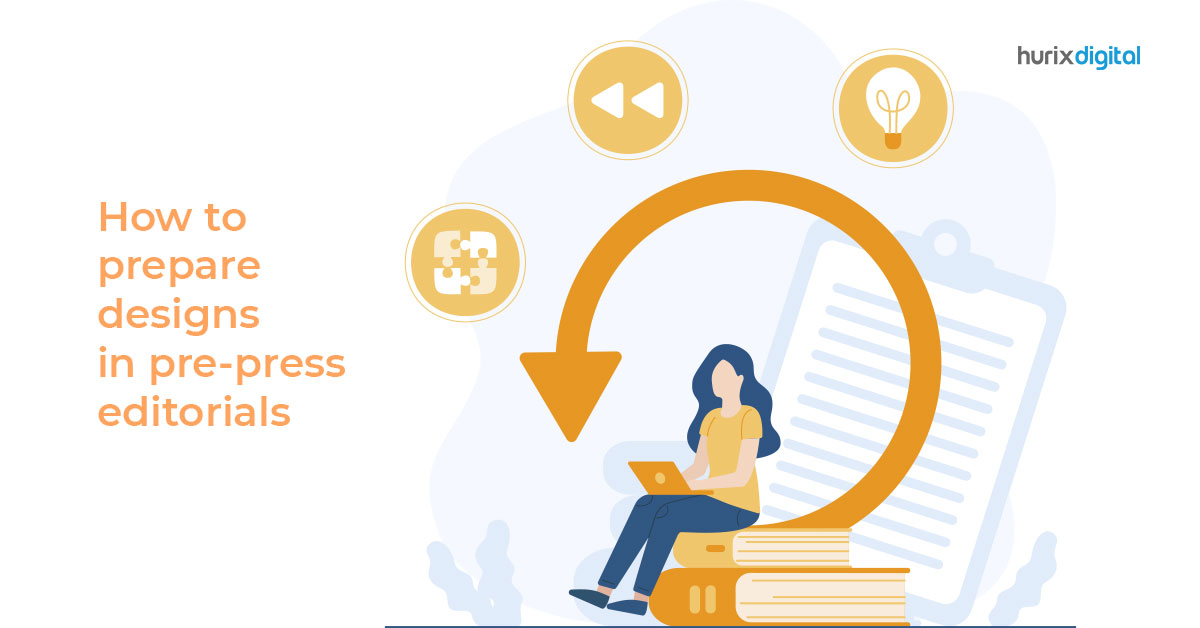
9 Easy Steps to Get Your Pre-Press Designs Aligned for Print
Summary
This article outlines nine straightforward steps to ensure your pre-press designs are perfectly aligned for print, emphasizing the importance of accuracy, consistency, and attention to detail in achieving high-quality print results.
Introduction
Printing may seem like a straightforward job. However, getting a design printed correctly involves a lot of work in the background to ensure that the designer can perfectly translate the client’s requirements onto paper.
It is for this reason that editorial and pre-press solutions exist. However, an essential process aligns the design with the print perfectly. Let’s take you through 9 steps to prepare your designs in pre-press editorials and prepare them for printing.
The Essential Pre-Press Checklist in 9 Steps
The quality of published press material has an immense bearing on how your target audience perceives your brand or publishing house. This makes it essential to publish only the best-composed designs – necessitating a well-formed pre-press process that checks all the boxes.
Listed below are the nine steps you should check to ensure that your designs are truly ready for paper.
Proofreading
If you think proofreading your text isn’t going to affect your sales, you may want to think again.
Standing Dog Interactive researched how grammatical errors affect buyer perception of a business, and it found that only 3% of the audience was willing to overlook such errors. The rest of the 97% were ready to churn to competitors.
You want to avoid formatting, grammatical, typesetting, and spelling errors at all costs, and this makes thorough proofreading your first step.
Typography
Much like proofreading is for cleaning up the text, typography is meant to help clean up how the typed text looks. Cleaning up the typography includes:
- Text leading
- Tracking
- Kerning
Although all the fonts are pretty much out-of-the-box and come with their own spacing and settings, it is best to take a visual judgment call and decide whether a tweak is necessary to achieve your envisioned design.
Doing this can help you achieve the oomph factor from your printed letters.
Image Checks
After you finish the text, it is time to move on to images. Ideally, the graphics sent for print should be as high quality as possible; this makes it necessary to keep the lowest image resolution at 300 dpi. Ensure that your final draft has a graphics resolution higher than that number.
As a general rule of thumb, always work with the graphics set at their highest resolution so that image quality isn’t a problem in the later stages of pre-press. Also, try not to enlarge any graphics more than 20% of their size to retain image quality.
Color Correctness
Checking the color correctness of all the graphics cannot be emphasized more if you want graphics that pop. Typically, all the editorial and pre-press solutions are configured to work in the RGB color mode. However, a printer needs the corresponding CMYK codes to understand those colors and print them on paper.
Ensure that your pre-press solution has the option to simulate CMYK colors as you work on your design. Doing this helps you create a near-likeness to your RGB spectrum, creating images that pop even on paper.
Screen Calibration
Much like translating RGB into CMYK helps with creating vibrant images that look vivid on paper, screen calibration is another aspect of ensuring the color accuracy of the prints.
You may have noticed your mobile phone with display options like “Standard,” “Vibrant,” or “Night Light” – all these are preset calibrations that change how colors appear on the screen.
Your design software also has color configurations that allow you to calibrate the screen to best reflect the true colors of your graphics.
Page Settings
One of the most overlooked aspects of the pre-press process is the page setting. Every piece of paper can be configured on the design software before it is sent to the printer, and this includes demarcating the bleed lines and the crop lines.
Crop lines are specified to help the printer understand where to cut the paper. On the other hand, bleed lines mark which areas are not to be printed. Doing this is important because it separates the design boundaries from the rest of the paper.
Imposition
Imposition is the process where you arrange your printing sequence in a way that best utilizes the paper you are printing on with a view to reducing wastage. Remember, paper is costly.
By using advanced software like Publisher or InDesign, you can automatically execute imposition in the software itself to some extent. It then goes back to adjusting the binding margins, bleeds, and crop marks to ensure that printing does not impact your design.
PDF Creation
Do you know why PDFs are so popular? It is because they are mostly lossless. Very little tampering can be done to a PDF file, which helps preserve the final composition you give to your design.
You don’t want accidental spaces or typos entering your final design, which is why w recommend investing in a good quality PDF converter and getting your final proof saved in this format. This is the file that should be forwarded for printing.
Paper Selection
Paper selection is underrated. For example, if you have extremely vibrant colors in your design, choosing pure white paper with a matte finish would help you make the design pop. However, for most subdued tones, an off-white printing paper would help create a better visual overall.
There are papers with a variety of textures and finishes as well that impact how colors and text would finally appear on them after printing. Additionally, there is the matter of paper finishes – textured, glossy, matte, handmade, decorated, etc.
Lastly, there is the consideration of paper GSM – the thickness of the sheet, which impacts cost and printability. Thus, paper selection depends on your graphics, budget, and the overall visuals you wish to achieve.
Wrapping Up
Pre-press doesn’t have to be complicated, even if you need to prepare designs for editorials that are print-ready. To simplify it even further, you can utilize Hurix Digital’s editorial and pre-press solutions to your benefit.
Our platform features all the tools necessary to digitize your manuscripts, customize them and polish them in the pre-press process. Get in touch with our experts to understand the Hurix Digital pre-press solution in more detail.

Passionate about developing innovative business models for customers in the content space. Primarily focused on the markets: US, UK, Europe, Middle East and APAC with 18 years of experience. Focused on collaborative working with internal teams such as Technology, Operations, Finance, and Marketing to ensure the voice of the customer is in everything that the company builds.



